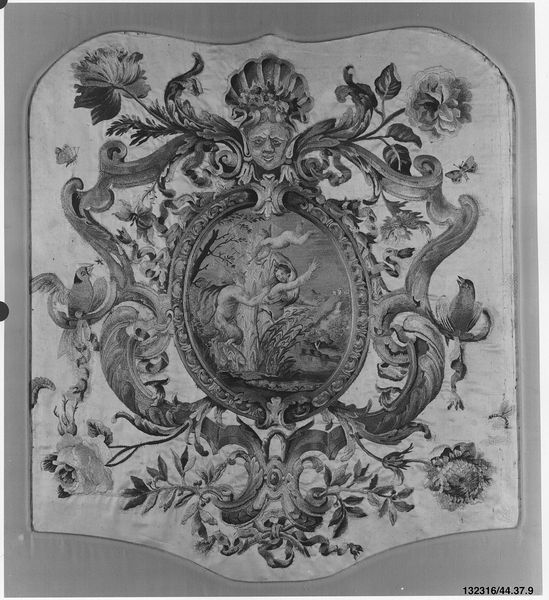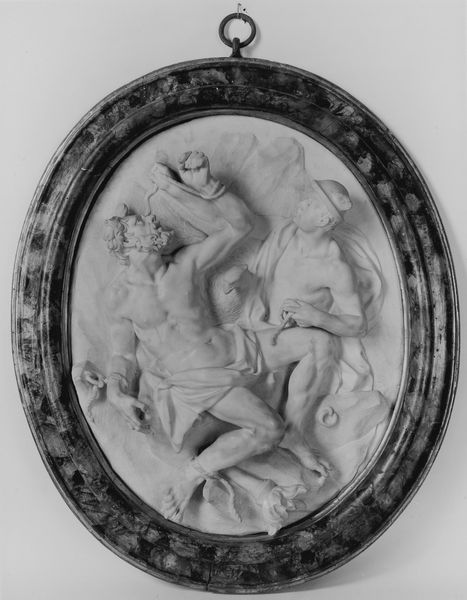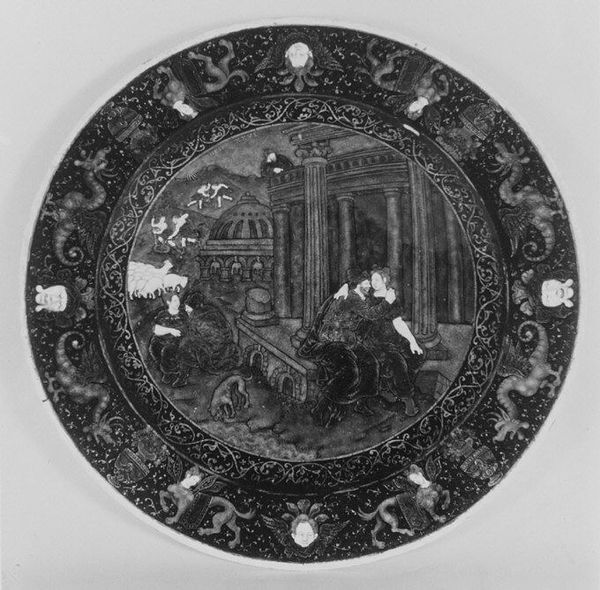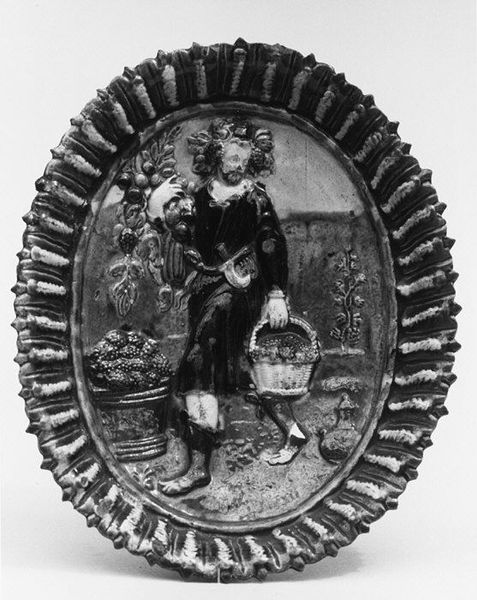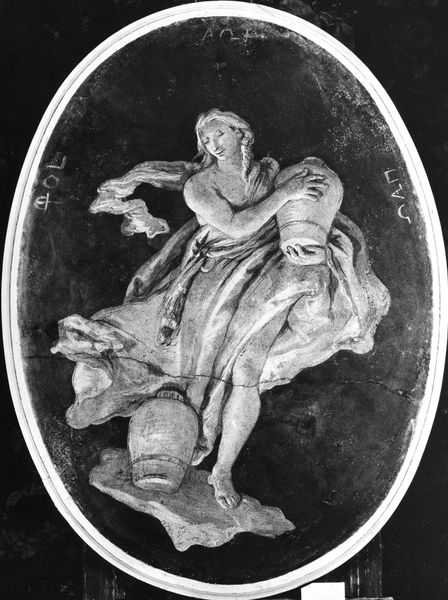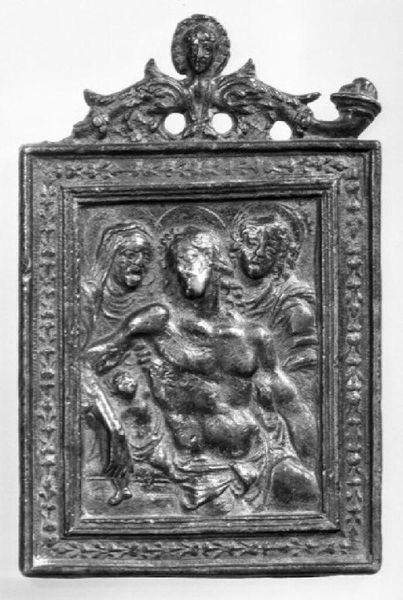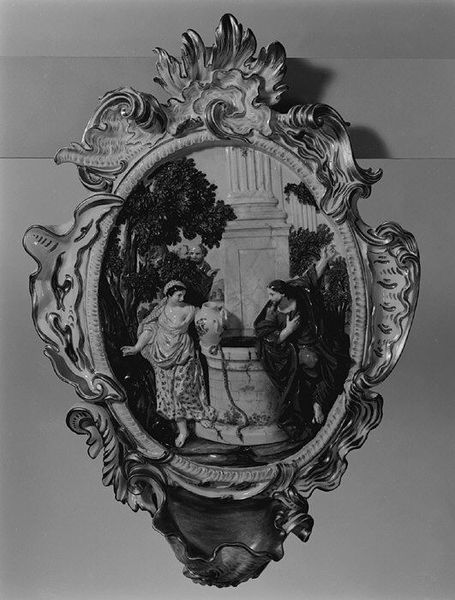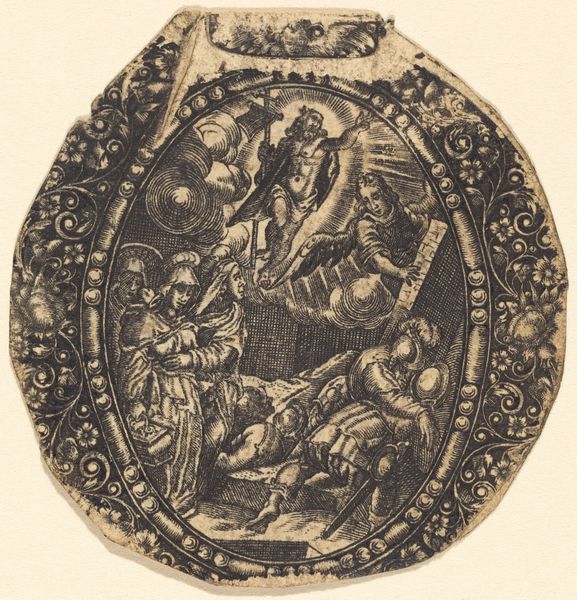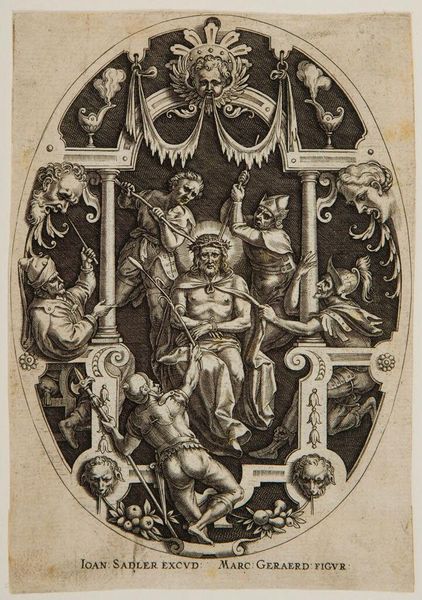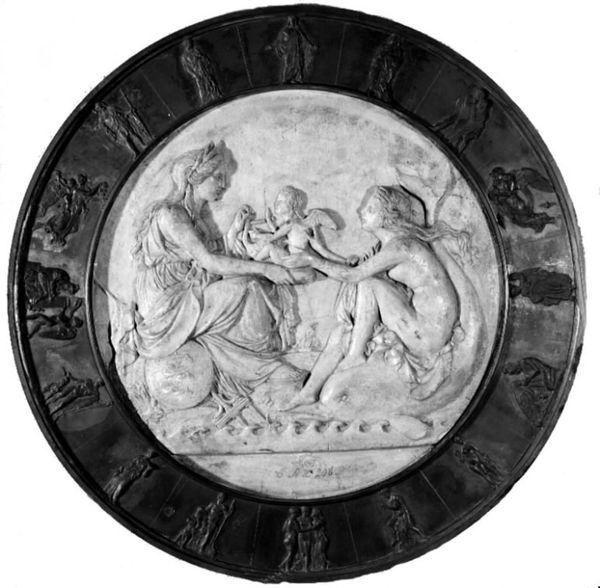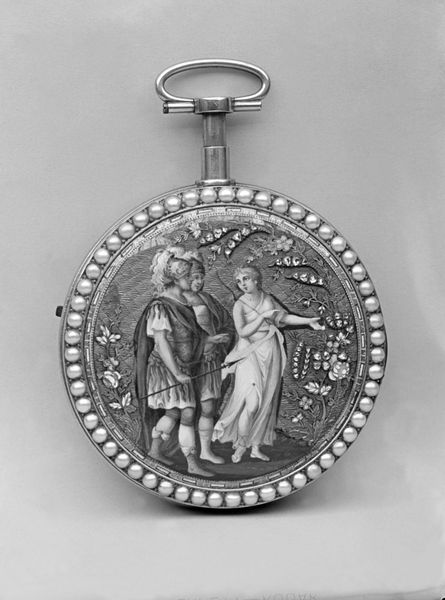
relief, ceramic, sculpture
#
allegory
#
baroque
#
sculpture
#
relief
#
landscape
#
ceramic
#
classical-realism
#
figuration
#
sculpture
#
history-painting
#
decorative-art
Dimensions: Overall: 10 11/16 × 8 7/8 × 2 5/16 in. (27.1 × 22.5 × 5.9 cm)
Copyright: Public Domain
Editor: Here we have "Dish with Allegory of Summer" which experts date sometime between 1650 and 1750. The relief in ceramic resides here at the Metropolitan Museum of Art. There's a striking sense of formality about the figure, this personification of Summer in this plate, its surface adorned with sculptural details. What aspects of its composition particularly capture your attention? Curator: The interplay of textures commands immediate attention. Notice the smooth, almost porcelain-like finish of the figure contrasted against the rougher, more organic textures of the surrounding foliage and the fluted column that sits behind it. How does this juxtaposition inform your understanding of the subject? Editor: It emphasizes, perhaps, the idealized, classical form of the human figure against the untamed abundance of nature. A posed figure that is distinct from all of its surroundings. The sharp radial pattern bordering the ceramic itself calls my attention, it doesn't seem to be coming from this world. Do you see any meaning in that element, too? Curator: Indeed. The bordering ornamentation further enriches the composition and disrupts the Renaissance notion of perspective with three-dimensional form of abstract relief. Focus, for a moment, on the central figure’s stance and gesture. How do the contrapposto and the placement of the hand on the wheat contribute to the overall effect? Editor: The contrapposto creates a sense of controlled elegance and motion. The hand seems protective, or like the subject is readying their scythe. Curator: Precisely. It directs our gaze and reinforces the theme of summer’s bounty, inviting contemplation on the passage of time. What’s most fascinating, from a formalist perspective, is how these carefully arranged elements work together to construct meaning independently of their historical or cultural context. This way we learn from the material in question by virtue of itself. Editor: That's an excellent point. By examining texture, form and placement of the central allegorical form in this tableau we've unlocked key areas of inquiry that shape an embodied understanding of summer itself. I'm inspired by how we examined this singular object.
Comments
No comments
Be the first to comment and join the conversation on the ultimate creative platform.
